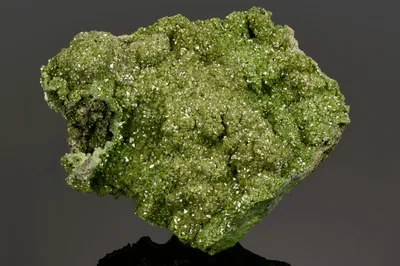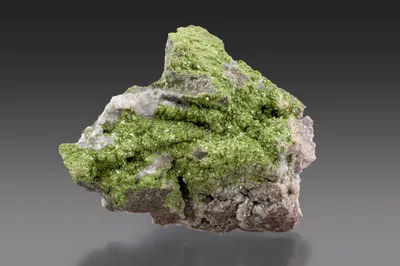
Image Credit: Malcolm Southwood
Mineral Species
Austinite
Type Locality
No
Composition
CaZn(AsO4)(OH)
Crystal System
Orthorhombic
Status at Tsumeb
Confirmed
Abundance
Somewhat rare
Distribution
Second oxidation zone
Paragenesis
Supergene
Entry Number
Species; TSNB37
General Notes
Pinch and Wilson (1977) described "… colorless to pale green or pale blue microscopic acicular crystals [of austinite] elongated along the c-axis" and green to dark-green ‘Cu-austinite’ sometimes forming spheroidal groups or curved crystals.
Lombaard et al. (1986) and Keller (1984) considered austinite to be very rare, while Gebhard (1999) rated it as common, though frequently overlooked.
Keller (1984) described hemispherical aggregates of "… weakly copper-containing… hemispherical warts" of austinite.
Gebhard (1999) noted that austinite "… has been frequently found in the second oxidation zone…". He described the occurrence of yellow-brown crystals of austinite to 3 mm on corroded tennantite "…which appear to be the finest of the species".
Austinite forms a series with conichalcite (Back 2018), and a range of compositions between the two end members has been demonstrated at Tsumeb (Southwood and Carr, unpublished data, University of Wollongong).
(Note that some specimens of copper-bearing austinite (‘barthite’) recovered from the Guchab and Rodgerberg mines, some 50 kms south-south-east of Tsumeb in the early 20th century, have been erroneously attributed to Tsumeb.)
Associated Minerals
arsenogoyazite; arsenohopeite; arthurite (?); baryte; claudetite (?); conichalcite; cuprite; dolomite; gaitite; helmutwinklerite; hörnesite; johillerite; keyite; koritnigite; köttigite; ludlockite; prosperite; tennantite-(Zn); zincroselite
Pseudomorphs
Austinite has been reported to form pseudomorphs after tennantite (rare; Gebhard, 1999).






